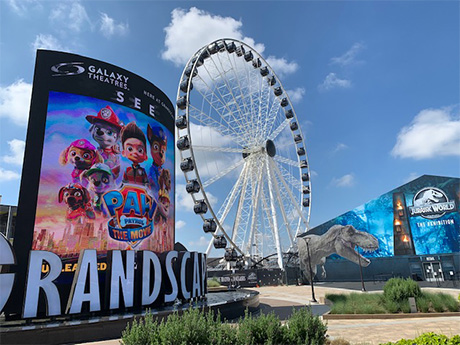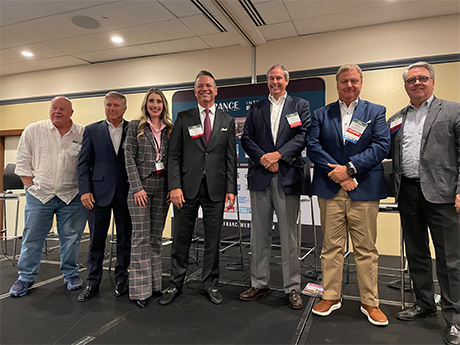By Taylor Williams
Brick-and-mortar retail has quietly, yet emphatically resurrected itself from the e-commerce- and COVID-induced death knell, bolstered by multiple years of low supply growth that have put a premium on quality space and allowed landlords to zero in on what truly constitutes a winning concept.
This notion is inherently subjective and difficult to quantify. But in Dallas-Fort Worth, retail owners and operators say that authenticity — as defined by uniqueness of the offerings and adherence to and reflection of local culture — is paramount to success.
From the presentation and packaging of products and services to utilization of local architectural styles to creating a certain shopping or dining ambiance, the ability to capture the authenticity of the market is crucial. Consumers and landlords can afford to be choosy, and they won’t waste time at stores, restaurants or entertainment venues that feel cookie-cutter, phony or out-of-place.
But retail landlords can ill-afford to do deals with tenants that simply look the part but lack the financial ability to pay rents, which are growing in urban locations where availability of space remains tight. Monetary due diligence remains critical, but as often as not, there is considerable overlap between the financial solvency and authenticity of concept that defines top-notch operators. And that’s the sweet spot that every owner wants to exploit.
“In today’s market, if you’re not working with best-in-class operators, second-best is no longer good enough,” said Eric Seitz, president and owner of The Seitz Group, which has developed and operated 60-plus shopping centers throughout Texas and the Southeast. “The way we bake the pie is completely different from what it was five or six years ago. The pieces are more important, and there are certain categories you have to avoid.”
Seitz’s comments came at the inaugural InterFace DFW & North Central Texas Retail conference, which took place in late August at the Renaissance Dallas Marriott Hotel. He was joined by five other developers and operators with decades of experience in the local market. Barry Hand, principal at the Dallas office of global architecture firm Gensler, moderated the development panel.
Seitz was quick to point to the way in which the lending community views the sector. With sky-high interest rates that have taken root over the last 18 months muting commercial loan originations — particularly for acquisitions and new construction — lenders are as scrutinizing as they’ve ever been when looking at deals. With retail, that means putting a microscope on the tenant mix, liabilities within which were heavily exposed leading up to and during the pandemic.
“Lenders want to see restaurants, some small shops, entertainment, fitness and maybe medical, and a lot of new retail projects have bigger sites to encompass multifamily and other uses,” he said. “It’s simply a different game, and [it’s tough to get financing] if you can’t put that mix together with best-in-class operators.”
Panelist Tanya Ragan, president of Dallas-based development and investment firm Wildcat Management, then took the baton from Seitz and dove deeper on the subject of authenticity in physical retail. Although the notion is nothing new in the world of brick-and-mortar retail operating philosophy, its importance has been elevated in the aftermath of COVID-19.
“The idea of the authentic experience — the notion of a place where people can not only live, work and play, but also feel a sense of belonging to a larger community — is almost like a religion,” she said. “Behaviorally, that’s what people want in the post-pandemic world — having everything right there that they need to have an exceptional experience.”
“Walmart and Amazon have taken care of transactional retail,” said Hand in response to Ragan’s analysis. “But if you want to look at light fixtures or try on jeans or eat with friends, they simply cannot replicate that, which is why we’re seeing so many retail developers pivot along those lines.”
Later in the discussion, Ragan identified retail as a collective thread that connects other components of mixed-use projects and quietly provides an impetus for growth. “The idea of what’s needed in these environments — there’s always a strong need and push for retail, but the reality is that you have to get the mix right and have the density to support the retail,” she said. “The concepts that go in have to succeed and be profitable in order to encourage the additional development. So finding that mix is super-critical.”
Panelist West Miller, president of Dallas-based Centergy Retail, then circled back to the issue of supply growth — a silent force that has buoyed the sector in recent years.
“At Regency Centers in the late ’90s and early 2000s, we developed two to three grocery-anchored centers per year,” he said. “That may not sound like a lot, but it amounted to 20-plus centers in about 12 years. Today, we’re working on our fourth in 12 years. We’ve basically gone from three per year to one every three years.”
Miller noted that for grocery-anchored product specifically, there was greater opportunity for expansion in the decade leading up to mid-2022, when interest rates were at historic lows. Ironically, he observed, now that capital costs have tripled, there appears to be greater push for expansion within the grocery space.
According to midyear data supplied by CoStar Group and analyzed by Weitzman, each of the Texas’ four biggest retail markets have occupancy rates in excess of 94 percent. In addition, the amount of new retail product under construction in each metro area is under 1 million square feet — although that figure represents both an unusually high and low number of supply growth depending on the market.
Panelist Ray Washburne, president and CEO of commercial investment firm Charter Holdings, further elaborated on the importance of unique and original retail, restaurant and entertainment concepts in a market like Dallas.
“When people come to visit in Dallas, there’s always a question of where to take them,” said Washburne, who is also a seasoned restaurant owner-operator. “What we really try to do is create places that are special to overcome that. We look at the Historic Stockyards in Fort Worth and the Pearl District in San Antonio, and we see unbelievable environments that people want to frequent. We want to create the Dallas version of that, even if we’re not totally sure what that means.”
Washburne’s current vehicle for delivering this uniquely Dallas destination is the redevelopment of the Kay Bailey Hutchison Convention Center and the surrounding parts of the downtown area. The City of Dallas has approved a bond-financed plan to demolish and rebuild the convention center, and Washburne has bought up surrounding property, including the former building of The Dallas Morning News, in preparation of the $3 billion-plus redevelopment.
While a project of this scale typically takes the better part of a decade to materialize, Washburne didn’t hesitate to share pieces of his vision.
“We’re going to bring in concepts like Topgolf and Chicken N’ Pickle,” he said. “We’re going to create an environment that doesn’t just serve the convention center, but the entire inner city of Dallas and creates a place where people from the suburbs want to visit and have staycations. It’s going to be a very special destination spot.”
Central to Washburne’s plan and philosophy is his holdings of the surrounding real estate, which allows him and his partners to “control the merchandise.” This ability to handcraft a tenant roster with a strong lineup of local and regional concepts and operators is critical to establishing a destination that is uniquely Dallas. This is especially applicable to the all-important food-and-beverage component.
“What you don’t want is to bring in restaurateurs that are already established in New York or Las Vegas or Chicago,” Washburne said. “That’s what we’re really focused on with the downtown project — having local people to give it local flavor and feel. And consumers want to shop in those places. The inter-mixing with local retailers is what gives you that special sauce.”

Steve Graham, principal at Stellar Development, the lead developer of the 433-acre Grandscape mixed-use development on the northern outskirts of Dallas, wrapped up the discussion with some updates on that destination.
Grandscape has emerged as a major entertainment destination over the last few years via its inclusion of national brands like Andretti’s Indoor Karting & Games, Galaxy Theatres and The Escape Game. New concepts — Cosm, Popstroke Golf, Fireside Surf, Fritz’s Adventure — will come on line to augment those offerings in the coming months, Graham said.
“Traveling nationally and internationally to recruit these tenants for Grandscape over the past decade has been amazing,” he said. “The leisure and entertainment tenants that we’re looking at now versus six or eight years ago are coming with family office investors, strong financial abilities and plans to roll out multiple units. The money has caught up with these concepts, making it easy to make decisions from a credit standpoint. While it always has been and always will be about the people, it’s no longer a leap of faith, and these concepts are drivers and attractions that bring people in.”
Hand concurred. “It really comes down to the fact that so many people in North Texas are really just looking for something cool to do.”


